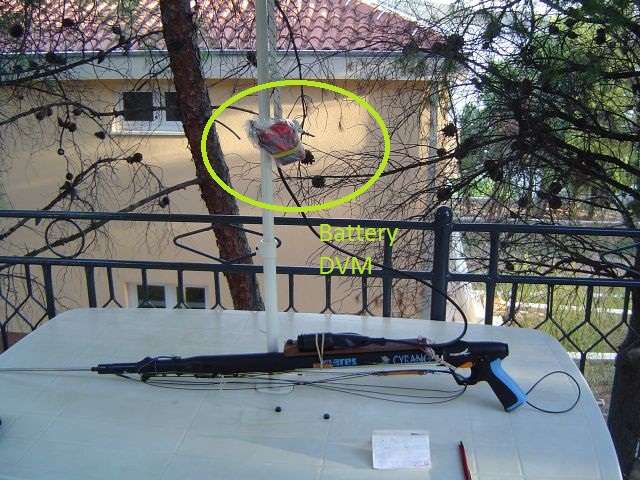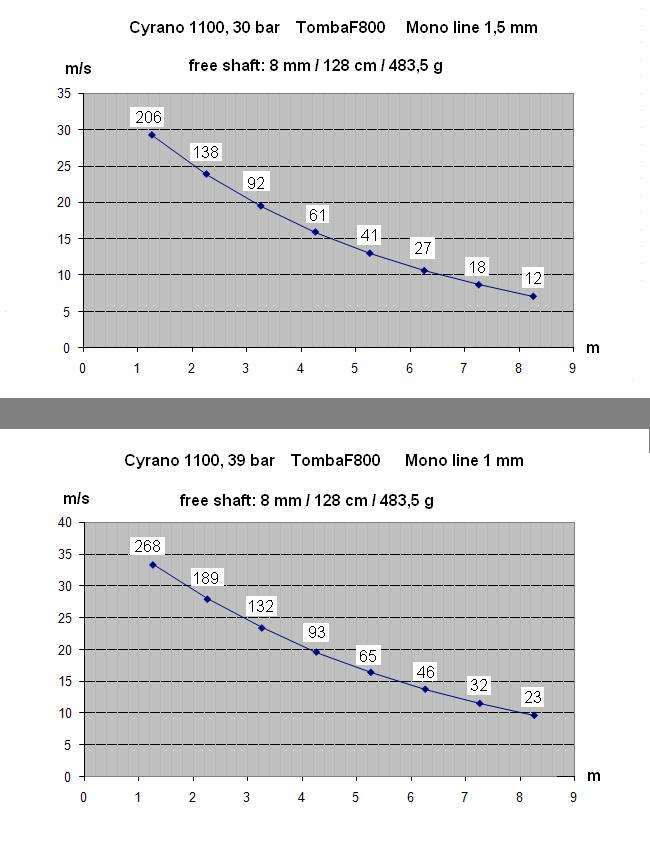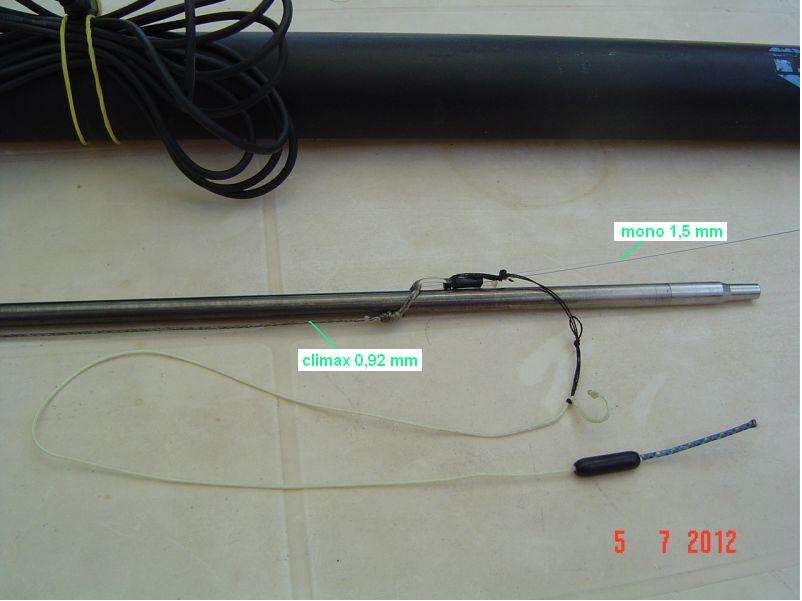An interesting question would be whether the velocity cross-over point occurs for 7 mm and 8 mm diameter shafts at the exact same velocity regardless of the speed that the shafts were fired at initially. For a more powerful gun with a higher muzzle velocity capability than the band gun used by Niko in his tests this would then push the cross-over point further out from the gun muzzle if that was always the case. If line drag determines the velocity cross-over point then this velocity (where v = V, with v for the 7 mm and V for the 8 mm) may change position along the flight path with different line types. Similarly the energy cross-over point, which occurs earlier than the velocity cross-over, may shift position along the flight path with line type changes, or the magnitude of the respective spear muzzle velocities if this also has an effect. Food for thought for additional experiments with these two shaft sizes and other shaft sizes in current use!
Why would we be interested? Well if we have the situation where the cross-over points occur beyond the target then slimmer shafts would be our first choice for their velocity and impact, but if the cross-over occurs well before the target then we have a possible shaft selection problem. Flight time to the target is preferably as short as possible for target interception, but if the target is slow moving and on a predictable course, or stationary, then a heavier shaft which may take slightly longer to arrive will cause more damage if M x (V)^2 > m x (v)^2 (the 1/2 in the kinetic energy formula cancels out on each side of the equation). Assuming that the heavier shaft has mass "M" and velocity "V" and the lighter shaft has mass "m" and velocity "v" at the time of impact with the target, then we can say that for the exact same energy stored in both shafts at that position v = V x sqrt(M/m).
More energy can be stored in a longer gun as the propulsion distance is longer and generally the length of the shaft guide or track section determines the minimum length of the shaft, so the only variable is the shaft diameter and possibly the type of speartip. Short pneumatic guns can propel shafts effectively for close range work (say within two metres) without shaft diameter being an issue, so the main interest is in medium to long range shots where we can perhaps reduce gun storage energy and propel slimmer shafts for the same degree of effectiveness in terms of flight time to target and the impact capability.
Slim shafts used to be too easily bent, especially if they were long, but they can now be made from better materials which means that they can be substituted for thicker shafts. From a practical viewpoint you want the shaft to stay in good shape after the fish is finished with it, otherwise you need some spare shafts! Shaft diameter implications and considerations occur at both ends of the shooting operation for muzzle loaded spearguns.
Why would we be interested? Well if we have the situation where the cross-over points occur beyond the target then slimmer shafts would be our first choice for their velocity and impact, but if the cross-over occurs well before the target then we have a possible shaft selection problem. Flight time to the target is preferably as short as possible for target interception, but if the target is slow moving and on a predictable course, or stationary, then a heavier shaft which may take slightly longer to arrive will cause more damage if M x (V)^2 > m x (v)^2 (the 1/2 in the kinetic energy formula cancels out on each side of the equation). Assuming that the heavier shaft has mass "M" and velocity "V" and the lighter shaft has mass "m" and velocity "v" at the time of impact with the target, then we can say that for the exact same energy stored in both shafts at that position v = V x sqrt(M/m).
More energy can be stored in a longer gun as the propulsion distance is longer and generally the length of the shaft guide or track section determines the minimum length of the shaft, so the only variable is the shaft diameter and possibly the type of speartip. Short pneumatic guns can propel shafts effectively for close range work (say within two metres) without shaft diameter being an issue, so the main interest is in medium to long range shots where we can perhaps reduce gun storage energy and propel slimmer shafts for the same degree of effectiveness in terms of flight time to target and the impact capability.
Slim shafts used to be too easily bent, especially if they were long, but they can now be made from better materials which means that they can be substituted for thicker shafts. From a practical viewpoint you want the shaft to stay in good shape after the fish is finished with it, otherwise you need some spare shafts! Shaft diameter implications and considerations occur at both ends of the shooting operation for muzzle loaded spearguns.
























